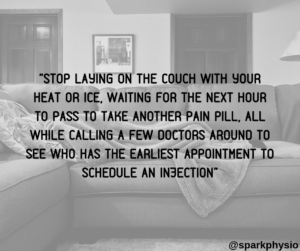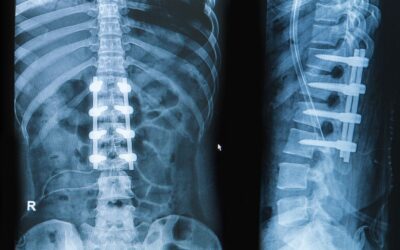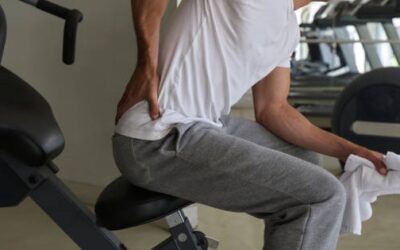We have all seen cases where someone “throws out their back” and then proceeds to start babying it for days, weeks, and even months or years.
I don’t know how many times I must reiterate the fact that “babying” your back pain is one of the worst things to do!
I just recently made a post about how movement is medicine. Why don’t people use movement as medicine more often? Instead, they resort to laying on the couch with their heat or ice. Or waiting for the next hour to pass to take another pain pill, all while calling a few doctors around to see who has the earliest appointment to schedule an injection.
I’m sure if you are reading this, you have been in that scenario, or something similar, a time or two.
Let’s face it, back pain is a common problem. So common that 80% of individuals will have it at some point throughout their life. Is that because the other 20% have “normal” spines…no! So, if the imaging isn’t telling you what is wrong, what is wrong?
Short answer, nothing is wrong. When we have an injury, it is our nervous system that tells us there is pain and that it must adapt. How do we aide with this adaptation? You guessed it, MOVEMENT!
The Thing About Back Pains
Think about it like this, most people start experiencing back pain in their 30s, 40s, and 50s. Yet, the back pain typically doesn’t get worse, even though as we age we should be seeing more “degeneration” on our back images. In fact, as we age, the pain typically gets better.
Patients come to us in their 40s, 50s, and 60s with these “scary” (their term, not mine) terms like “degenerative disc disease”, “bulging disc”, “degenerative joint disease”, etc. but don’t realize that this is a normal part of aging. It is like wrinkles on your skin. Or your hair starting to turn gray. It happens with time.
It is very frustrating when people come to me and are fearful of movement because of the “scary” terms they were given, and nobody took the time to explain to them that it is normal! Or, worse yet, somebody induced fear-mongering strategies and now the patients are fearful of moving. Just as a reminder, MOVEMENT IS MEDICINE and the “scary” stuff on your image is just a sign of aging. We can’t stop the aging process! Have you ever tried to stop getting gray hair? Or stop your vision from getting worse?
Conclusion
According to the National Institute of Neurological Disorders and Stroke: “The magnitude of the burden from low back pain has grown worse in recent years. In 1990, a study ranking the most burdensome conditions in the U.S. in terms of mortality or poor health as a result of disease put low back pain in sixth place; in 2010, low back pain jumped to third place, with only ischemic heart disease and chronic obstructive pulmonary disease ranking higher.”
Why is it more burdensome now? I think the attitudes about it have changed over time. In the past, people developed back pain and just kept going. Now, people are seeking medical help way too quickly and the healthcare profession is trying to capitalize on that by offering passive treatments and not getting people up and moving like we are meant to be! My only hope is that we start going back 30-40 years ago and start treating it the active way as healthcare professionals.
If you are still uncertain if movement is right for you or if you are having difficulty knowing how to strengthen your back to get you back to your active lifestyle, feel free to apply for a free consultation. We can schedule a time to discuss your next best option.




